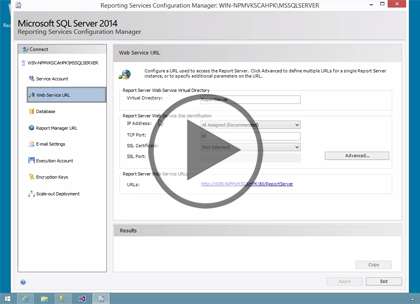Course description
In this course, you’ll learn how to work with the security features of Reporting Services. You’ll start by learning how to authorize users to perform actions at both the server and folder level, as well as how to use Management Studio to manage report server roles. Then you’ll learn how to enable Basic authentication, necessary to allow report access via non-IE browsers and outside the local network. It is generally a very bad practice to transmit credentials or data in the clear over any network, even a local network, so next you’ll see how you can enable and optionally require the use of SSL (really TLS, or Transport Layer Security) anytime a user or application accesses Reporting Services. Then you’ll learn about how report data security hooks into the data security features of the core database engine of SQL Server. You’ll see how to require different kinds of credential for any data source, both in SQL Server Data Tools and in Report Manager. You’ll also learn about the permissions required to access data for a report.
Prerequisites
This course assumes that you have a basic familiarity with the concept of relational databases and a basic understanding of what SQL Server is and the high-level tools in it, as well as how to create and manage objects using Management Studio. You should also have a basic understanding of how SQL Server implements security, including its authentication and authorization schemes, and how to assign permissions on securable objects to principals. You should know the fundamentals of Transact-SQL to write queries to retrieve data and join data from multiple tables, and how to execute scripts using the query editor in Management Studio.
It will be very helpful, but not absolutely necessary, to have experience with .NET development using Visual Studio 2012 or 2013 for the portions of the course that deal with SQL Server Data Tools. At the very least, we’ll assume that you are well familiar with the Visual Studio user interface.
Learning Paths
This course is part of the following LearnNowOnline SuccessPaths™:
SQL Server Reporting Services
Meet the expert
Don Kiely is a featured instructor on many of our SQL Server and Visual Studio courses. He is a nationally recognized author, instructor, and consultant specializing in Microsoft technologies. Don has many years of teaching experience, is the author or co-author of several programming books, and has spoken at many industry conferences and user groups. In addition, Don is a consultant for a variety of companies that develop distributed applications for public and private organizations.
Course outline
Reporting Services Security
Securing Access to Reports (20:42)
- Introduction (01:08)
- Securing Access to Reports (01:37)
- Demo: System Role Assignment (05:21)
- Demo: Home Page Assignment (05:15)
- Demo: Child Folder Assignments (06:13)
- Summary (01:04)
Managing Reporting Services (09:43)
- Introduction (00:31)
- Demo: New User Role (05:02)
- Demo: New System Role (03:35)
- Summary (00:33)
Basic Authentication and SSL (19:16)
- Introduction (00:43)
- RS and Basic Authentication (00:52)
- Demo: Edit Authentication (05:39)
- Reporting Services & SSL (02:14)
- Demo: Enable SSL (06:00)
- Requiring SSL (01:49)
- Demo: SecureConnectionLevel (01:26)
- Summary (00:31)
Data Security (16:54)
- Introduction (01:00)
- Demo: VS Sample Report project (05:02)
- Demo: Data Source Security (02:55)
- Credential Storage (01:22)
- SQL Server Permissions Needed (03:00)
- Demo: Report Manager Security (03:05)
- Summary (00:27)



